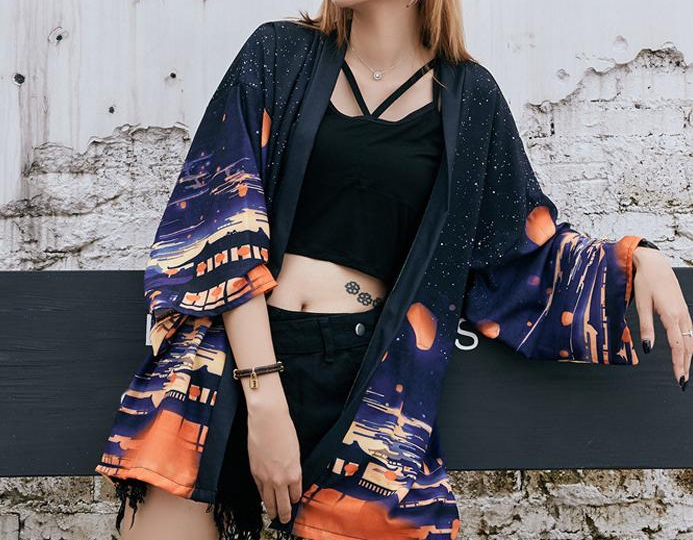The kimono is perhaps the most iconic item of traditional Japanese clothing. In addition to their unique aesthetic, kimonos are valued for their symbolism; style, motif, colour, and material work together to reveal the individual identity of the wearer.
Here is a list of some traditional Japanese clothing that you may find interesting.
HOW AND WHEN TO WEAR?
The word Kimono literally means “thing to wear”. It can be worn by both men and women. Although Japanese people now wear kimono when they have ceremonial occasions such as weddings, they rarely wear them in their daily lives.
However, there has been a recent boom in re-embracing historical Japanese traditions, and young women will take to wearing kimono or yukata (informal cotton kimono) when sightseeing in ancient towns such as Kyoto and Kanazawa, or going out to enjoy festivals and fireworks events.
Kimono are made from long pieces of fabric, usually sewn by hand along straight seams, with a collar attached to give a clean shape around the neck. A complete outfit consists of putting 12 or more separate pieces, the length of the kimono can be adjusted by tying it with a koshi himo belt before applying it to the more ornate obi belt. Remember to fold the left side over the right side because the reverse is only used to dress the dead for burial.
HAORI
The Haori is a Japanese traditional jacket with a loose fit. They range in length from a standard jacket length, to mid-thigh, and even hong haori that can reach your calves. Unlike kimono, they don’t wrap closed, and are normally worn open, although some will have a tie that connects at the lapels. Haori jackets can be worn by men and women, though you will find some slight differences in style for the different genders.
Men’s haori are typically a single, dark colour on the outside, and formal versions have one to five family crests. The inside linings of the most formal versions reflect something about the personality or interests of the original owner with elaborately painted, printed or woven designs.
YUKATA
Yukata is known as the summer kimono. It’s the most casual unlined traditional garment, usually made of cotton, linen, or hemp for summer use.
Yukata are associated with summer and summer activities. They are worn in other seasons inside a ryokan (Japanese inn) or onsen (hot spring) building, as they are handed out to guests for use.
You can also wear yukata to attend summer festivals and fireworks. This fabric is lightweight and perfect for rainy weather too. Men’s yukata is usually more modest when it comes to colour and design compared to women’s yukata, which often features bright colours and floral patterns.
JINBEI
Jinbei are worn mainly by men and boys in the summer. They are worn for casual events such as fireworks or festivals. Typically come in a matching set of a top and trousers, either short or long; though the trousers resemble Western trousers, the top resembles a kimono, with a wrapped front and a long collar set on a diagonal angle. You can also enjoy wearing them at indoor events or as your lounge wear in all seasons.
HAKAMA
Hakama are a pant-like garment worn over a kimono, once worn only by men but now used by both men and women. There are two different types of hakama: divided umanori (horse-riding hakama) which have a split material for legs to move more freely, and undivided andon bakama (lantern hakama). Many martial arts traditions that make use of hakama have a particular way of folding it. This is considered an important part of etiquette.
Summary
The kimono today enjoys greater prominence and influence in the world of fashion than ever before. Japanese street style is known for its diversity and boldness, it’s about people expressing who they are through their clothing.We invite you to visit our website and check out the latest fashionable Japanese clothing, socks, cushions, curtains and much more!













